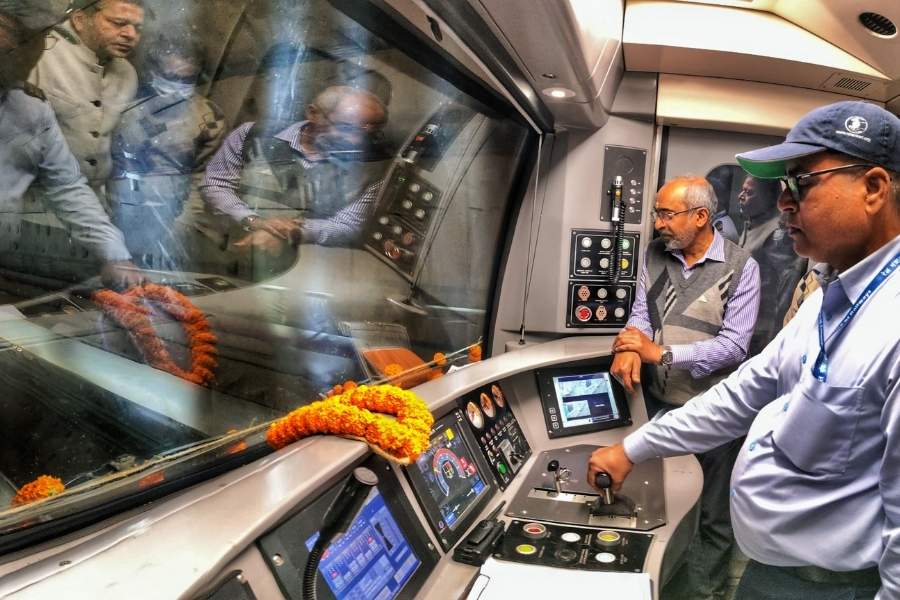
From the Royal Calcutta Turf Club (RCTC): There are different dimensions of the RCTC that could serve as a training school for presentable photography. The giant bell on the premises with the facade of a grand premises in the background, with the winter afternoon sun slanting on the architecture. The long white turf benches skirted by sequential dew drops patiently building a globular critical mass, the jockeys in their coloured riding attire cantering in the pre-race paddock. The grandeur of the architecture, studious bettors scrutinising yellow books, the circular green, syces leading horses to the track, the dome clock, the marbled corridors and the relaxed splendour of Edwardian England
All photos by Mudar Patherya
From Trincas: You don’t just step inside a restaurant at the western end of Park Street, you step inside the 1960s. Red leather padding, the wallpaper, sepia wall frames, the restaurant’s archived history, the live band and the monogrammed cutlery. Rarely will you get a restaurant with such a history — now that there is no Firpo’s, Ferrazini or SkyRoom. Even rarer will you get a proprietor ‘serving’ memories before minestrone. Maybe the fish on the menu is exotic; maybe the continental Au Gratin is exactly the way it tasted in 1955. Who cares? People go to Trinca’s for the ‘mood-o-maahaul’ of a Calcutta that once existed (Mick Jagger did too in November 2023). A suggestion for Anand Puri: start a heritage tour of Trincas sandwiched between meals. Calcutta is waiting to drink nostalgia before breakfast, or any time actually
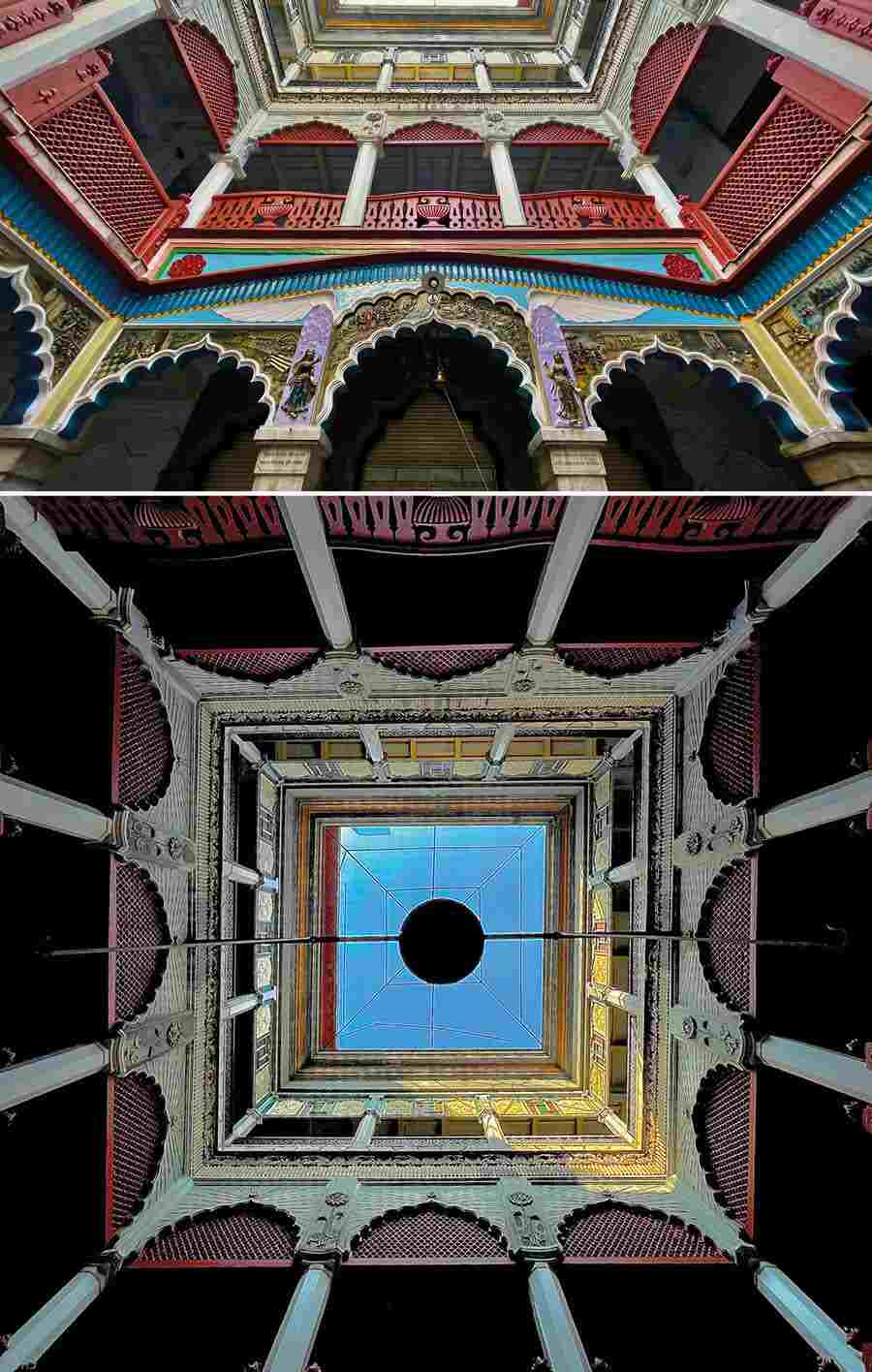
From the Senbari mandir: The Sens live at the Bowbazar end of Amherst Street. Their building is remarkably maintained — painted each year before Durga Puja — and the central courtyard is generally accessible to most photographers seeking a symmetrical vertical frame. The Sens are engaging; I have never failed to notice their courtesy in escorting first-time stragglers like me to their mandir a few buildings. The prized frame here lies not in front (of the ‘thakurdaalan’) but above. I recommend that you go there, find the courtyard’s central spot, look upwards, balance the symmetry and shoot. I do this biannually, only to check if the nerves and neck continue to be steady

From the Chhoto Rashbari, Chetla: I saw this temple, about 1,200m from my residence, for the first time in September 2023. How could I — a resident of the neighbourhood for 27 years — have missed it? Why didn’t someone tell me about this unseen beauty? Some reasons: the temple is sparsely used, it is in a state of splendorous ruin, it does not have a visible benefactor. On the other hand, it is 1846 vintage, sits next to Adi Ganga, it inspired the architecture of a more hallowed Dakshineswar cousin that came up in 1855. Moreover, the temple enjoys an architecturally unbuilt background — no skyscrapers, so a clean view — and, amazingly, no encroachment. My 2024 mission is to find a heritage-inclined citizen who can fund the turnaround of this heritage asset

The GPO rotunda and dome: The General Post Office (GPO) is not a structure, it is an experience — for its scale, shape and structure. It would be reasonable to say that there is perhaps no architectural equivalent in Kolkata. During the last few months, I carved out opportunities to observe the GPO, in isolation and in conjunction. I climbed to the edifice terrace to observe its sweep from touching distance; I observed the dome at eye level from the Royal Insurance Building; I sought another angle from the Collectorate Building. I dream of a day when the GPO is permanently illuminated (warm yellow) to emerge as an evening showstopper, this side of the Ganges. I dream of getting to the roof of one of its neighbours to catch the sunrise off the dome. I dream of venturing there during the monsoons to catch the grey cumulus in the background. It is a dome to build a dream on
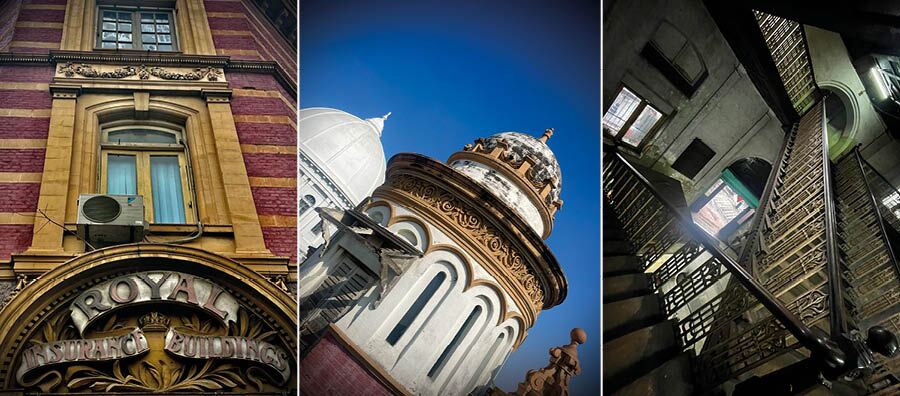
From the Royal Insurance Building: This building has lived in the shadow of its intimidating neighbour, the GPO, and some misplaced trees for more than a century. All those who nod at part of the facade still visible usually miss the more fascinating insides of this 1920 showpiece — the combination of grill and wooden staircases, the monogrammed doors, vertically extended windows through which one can catch the dramatic white of the towering neighbour, and the marbled logo of Royal Insurance on the ground floor. I intend to approach the owner of the premises for permission to install permanent illumination that could be a wondrous light-and-shadow simulation across the two storeys, accompanied by a classical music orchestra. For long, Kolkata has been hostaged by those seeing architecture as brick-and-mortar and not as an experiential platform. Time for change
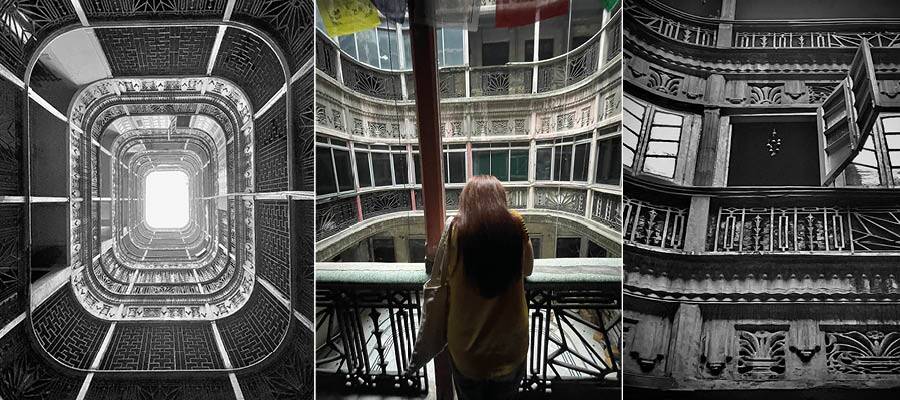
The Nanda Mullick Lane triplets: Decades ago, three brothers built identical buildings for themselves on a Kolkata lane. If there was one thing for which they stood out, it was their central courtyard. These provided the Rajasthani residents the opportunity to showcase architecture from the region of their origin, and an opportunity to engage across storeys through the verandahs. On multiple occasions last year, I walked into each building with the look of a familiar resident — so that no durwan would question me — took quick vertical frames and left. Until, I ventured one August evening for old time’s sake. What I saw that evening, with lights switched on across multiple storeys, has seeded an idea that could germinate into the Calcutta Lighting Festival. Soon

From the Lohia Matri Seva Sadan: I usually describe this Rabindra Sarani property with a suffix (‘What a place’) as if it were one word ( ‘Lohiamatrisevasadanwhataplace’). For its spatial vastness. For its multi-level structure. For its tiled presentability. For its grandness. I have often speculated: why not repurpose the long frontal mansion steps (remember the pram scene outside the Chicago Grand Central Station in The Untouchables?) leading to the multi-columned façade into a dance ‘floor’? Why does someone not curate an annual performing arts festival at this location? The memories that we build of events like these would draw South Kolkata to this forgotten neighbourhood, be remembered nostalgically across the decades and empower a generation to think kindly of Calcutta wherever they go

From inside the Rabindra Sarobar museum: A museum inside the Sarobar? Welcome to one of the best kept secrets of south Kolkata’s biggest lung — Ma Phire Elo, Durga Museum. The museum on the Gobindapur side, five minutes away from Lily Pool / Bengal Rowing Club, was repurposed from a warehouse to showcase some of the best Durga Puja installations. The last time I went I found it better than the average Kolkata museum. What consumed most of my time was not a ‘protima’ — blame this on my unrefined upbringing — but the conical spiral above the pathway leading to the museum. I took pictures. Changed my position to take more. Altered the phone angle to take even more. An observation: why does the government not engage a cultural-communication group to conduct performances here and post these on social media? Why should someone have to stumble across this museum by chance? Why should there not be any literature that communicates the concept behind each ‘protima’?
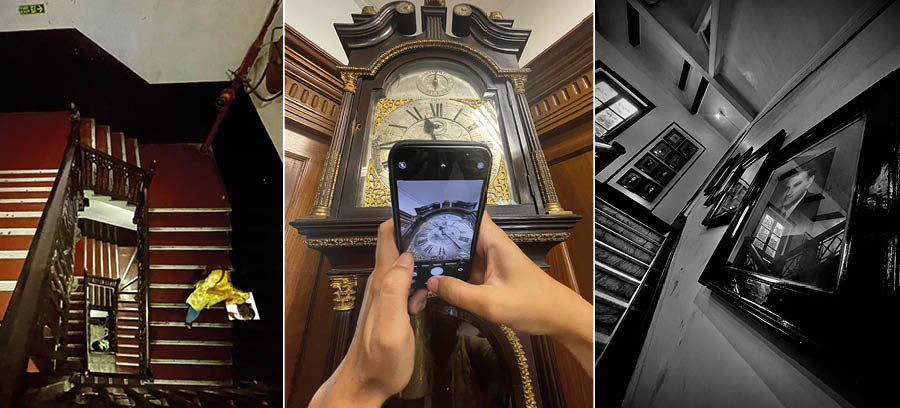
From Bengal Chamber of Commerce: The jewel in the collection of this institution at the corner of India Exchange Place and NS Road is not the marble staircase, the brass plate on the ground floor or sepia frames everywhere. The jewels are the two rooms on the second floor that have scarcely altered across 150 years. The polished chairs, the writing table, the framed parchments, the legacy humidity metre, the grand clock. To observe the clock’s numerical typefacing, polished metal strips, embellished arch, ‘clock’ within the clock, maker’s name, and the chime, is a unique experience. Again one of my thoughts: why not curate the history of the premises into a heritage walk over the weekends (so that it does not interfere with the commercial activities on the premises)?
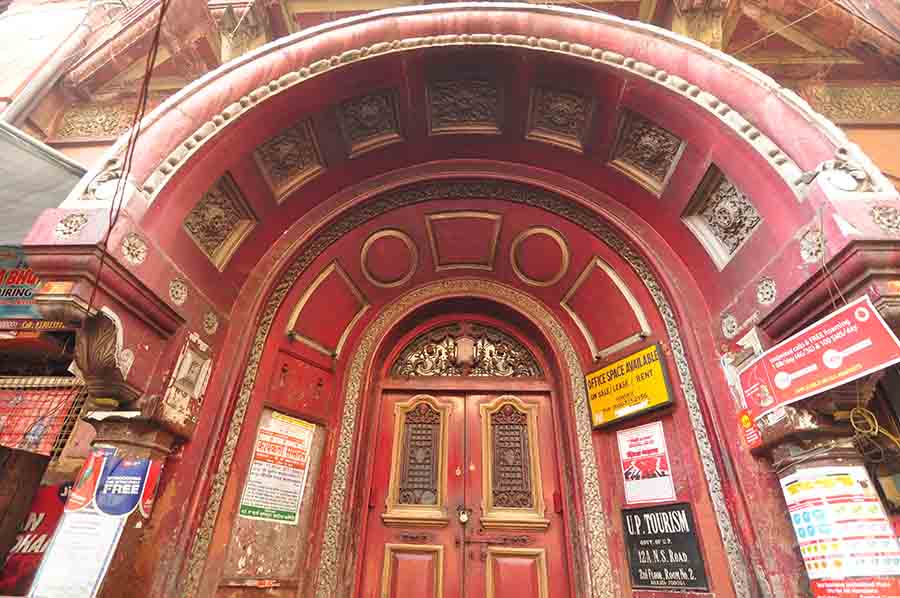
The red door on Dalhousie: The most wonderful door in Calcutta can be found at 2, Burrabazar. Most wonderful by design, most ravaged by trade unions and offices. What this door could be with all handbills removed. What this door could be with soft illumination, What this door could be if the history of its (and of the building’s) design could be communicated. What if the tenants agreed on ‘no handbills’? Must find out who owns this place to begin a dialogue
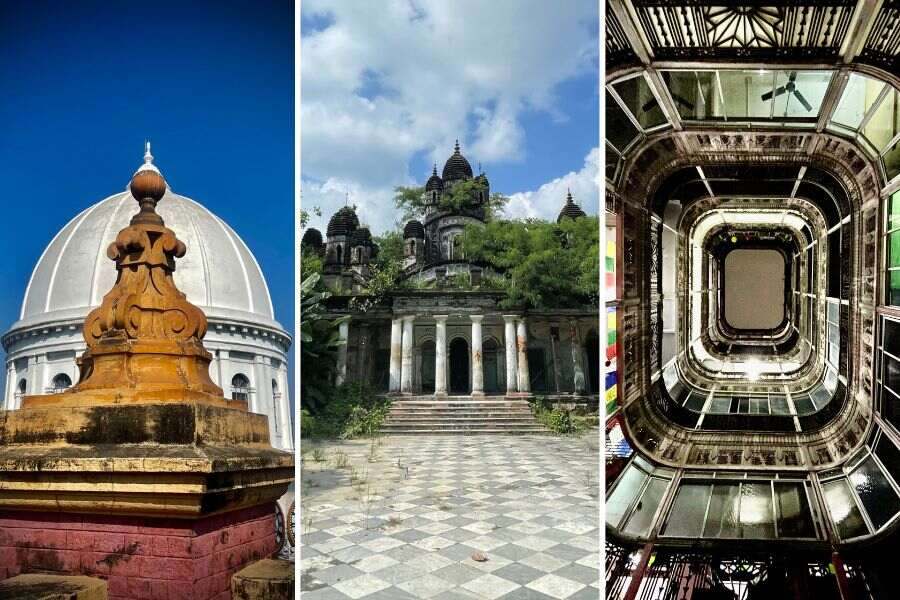
The more I write on Calcutta, the more I realise that the ‘what if’ strain extends from facades to the city — what it is, what could be to it, and what it could become. In picture (L-R) The GPO dome from the Royal Insurance Company building, Chhoto Rashbari, inside one of the Nando Mullick Lane homes


